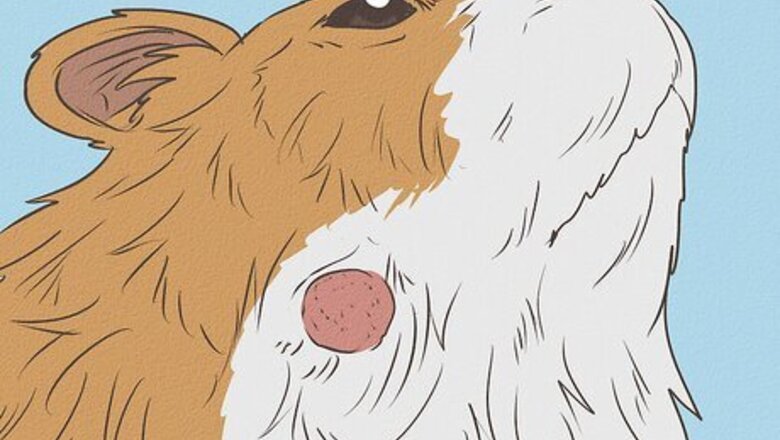
views
X
Research source
It probably won’t be hard for you to see the lump, but only your vet will be able to determine what caused the lump to appear. When you notice a strange lump on your guinea pig, take your guinea pig to your vet for a diagnosis.
Examining Your Guinea Pig at Home

Look for abscesses on the head and neck. Abscesses under the skin are very common in guinea pigs. They are the body’s attempt to ‘wall off’ an infection and keep it from spreading. Abscesses can form either after a bite from another guinea pig, or if something rough and sharp (e.g., straw) goes through the skin. They can form anywhere on a guinea pig’s body, but the most common locations are the head and neck. An abscess in the neck could be a swelling of the lymph node in that area. Lymph nodes are small glands that help the body fight infection. An abscess can feel firm or soft.
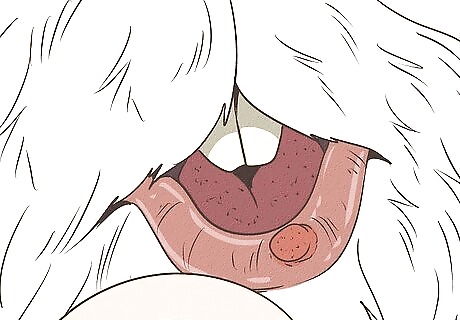
Identify abscesses in your guinea pig’s mouth and jaw. Abscesses can also form in the mouth or jaw of a guinea pig. Abscesses in these areas can become large very quickly. Your guinea pig may look fine on one day, then have a large abscess the next day. When you handle your guinea pig, gently open its mouth to see the abscess. If the abscess is in the jaw, you will see a large bump along your guinea pig’s jawline.

Examine your guinea pig’s back for cysts. Guinea pigs can get several types of cysts, with the most common being a sebaceous cyst. Sebaceous cysts contain oil from the skin glands that produce oil (sebaceous glands). Sebaceous cysts are typically located on a guinea pig’s back and near the rump, but can form in other places as well. Although they can become very large, cysts are usually about the size of a pea. Cysts become a problem if they become large.
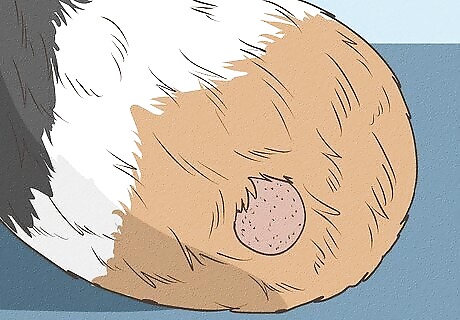
Check for tumors on the tail and chest. Tumors can also form lumps. For example, a lump on your guinea pig’s tail could indicate a skin tumor called trichofolliculoma. A lump on the chest could indicate another type of cancer called lymphosarcoma. A female guinea pig can develop a mammary tumor, which you would see as a lump on the belly. Lipomas are tumors made up of fat cells. There are no specific places where you would look for a lipoma on your guinea pig. Your guinea pig may have several lipomas at one time.
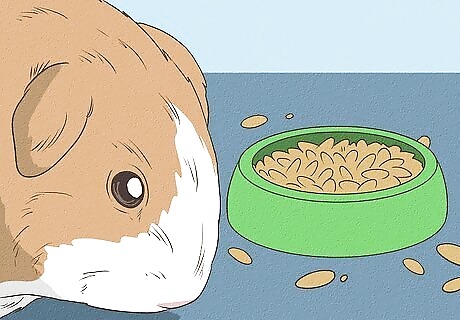
Detect a decreased appetite. Sometimes, a lump can make a guinea pig feel so bad that it doesn’t want to eat. For example, if your guinea pig is not eating its meals and doesn’t want any tasty treats, check its mouth for an abscess. Even if your guinea pig wants to eat, the size of the abscess in its mouth or jaw could make it difficult to chew food. Sometimes, a guinea pig will stop eating right before an abscess ruptures (an abscess can sometimes rupture on its own).

Smell your guinea pig’s breath. When you hold your guinea pig, take a quick sniff of its breath. If your guinea pig has a mouth abscess, its breath will probably smell quite unpleasant. The unpleasant smell would be due to infection. Along with bad breath, you may also notice drooling.
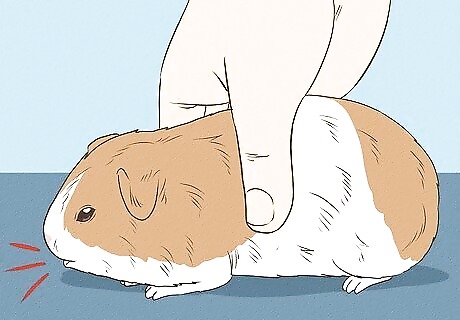
Observe changes in behavior. An abscess can be very uncomfortable for a guinea pig. If your guinea pig squeals with pain when you pick it up, seems really tired, or doesn’t want to play with you, it could have an abscess. You may also notice your guinea pig heavily grooming the area of the abscess.
Getting a Veterinary Diagnosis
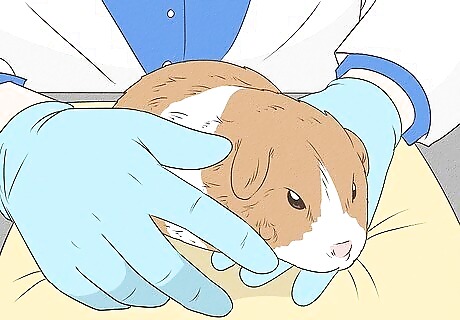
Take your guinea pig to your vet. If you see a lump on your guinea pig’s body, schedule an appointment with your vet. Your vet will perform different tests to determine the cause of the lump. Do not delay in taking your guinea pig to your vet—if the lump is an abscess, it could make your guinea pig very sick by overwhelming your guinea pig’s natural defenses against bad bacteria.

Explain your guinea pig’s history. During your appointment, give your vet as much information as you can about your guinea pig. For example, talk about your guinea pig’s overall health and when you first noticed the lump. In addition, provide information about your guinea pig’s diet, living environment, and if it has cagemates. Your vet will use the information you provide to come up with a diagnosis. Therefore, the more information you provide, the better.
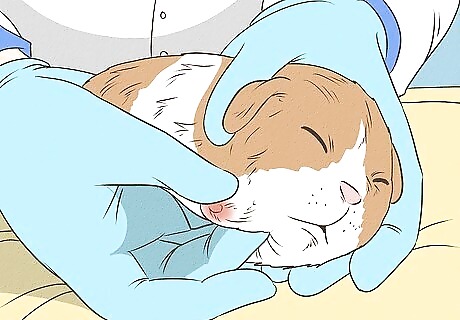
Allow your vet to examine your guinea pig. A physical examination will give your vet important clues about what caused the lump to form. Your vet will weigh your guinea pig, look it over from head to toe, and listen to its heart and lungs. Your vet will pay special attention to the area of the lump.

Allow your vet to perform additional testing. Your vet may want to run some extra tests to confirm the diagnosis of the lump. One type of test is called fine needle aspiration (FNA), during which your vet will use a small needle to withdraw a fluid sample from the lump. Your vet will look at this fluid under the microscope to detect different cell types (e.g., fat cells, white blood cells). Another type of test is a biopsy, which would help your vet diagnose a tumor. Your vet would need to sedate or anesthetize your guinea for FNA or a biopsy. A fluid sample from the lump can be useful for identifying bacteria. The test to identify bacteria is called a ‘culture.’
















Comments
0 comment